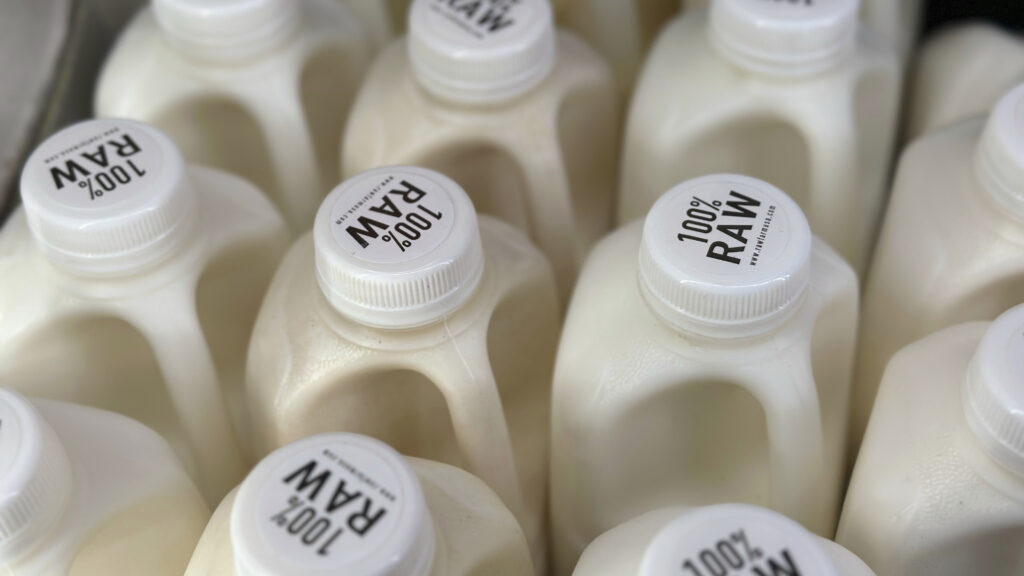A new study published Friday provides more evidence of the potential danger of drinking unpasteurized, or raw, milk containing H5N1 avian flu viruses.
The work, published in the New England Journal of Medicine, showed that mice that were fed milk from H5N1-infected cows became very ill.
advertisement
The study cannot prove that what happened to the mice would definitely happen to people who drink raw milk containing the dangerous virus, but it underscores the probable risk, experts said. Studies like this cannot be conducted in people, for ethical reasons.
“Raw milk is clearly highly suspected of transmitting [H5N1] to animals,” said Michael Osterholm, director of the Center for Infectious Disease Research and Policy at the University of Minnesota. “It’s still unclear what the risk is for humans. But I wouldn’t want to take my chances on it.”
Thijs Kuiken agreed. A pathologist in the department of viroscience at the Erasmus Medical Center in Rotterdam, the Netherlands, Kuiken has long studied the effect of H5N1 viruses on mammals, including cats. In this outbreak in dairy cattle, there have been multiple reports of farm cats dying, presumably after drinking contaminated milk.
advertisement
“Based on the weight of evidence from our knowledge of [this lineage of H5N1], to which this letter contributes, it is likely that people drinking raw milk from infected cows would contract systemic disease,” Kuiken told STAT in an email.
The Food and Drug Administration has long advised against drinking raw milk, which can contain a number of dangerous pathogens such as E. coli, Salmonella, and Listeria. The agency has reiterated that advice in the context of the current outbreak of H5N1 in dairy cattle. As of Thursday, 58 herds in nine states have tested positive for the virus since the outbreak was first detected in late March, and two human infections in farm workers have been detected.
Neither Kuiken nor Osterholm was involved in the research, which was conducted by researchers at the University of Wisconsin–Madison. The senior author was Yoshihiro Kawaoka, a leading influenza virologist who has studied H5N1 for decades.
Kawaoka told STAT in an email that the mice were euthanized on day 4 of the study “because we did not want to see mice die before [tissue] sampling.” Studies that involve exposing animals to potentially lethal pathogens do not allow them to experience lingering deaths.
There were multiple components to the study, which was conducted in early April before the FDA and other academic groups announced findings of research that showed that active virus could not be grown from milk products that had undergone pasteurization.
In addition to the work that involved feeding raw milk to mice, the team simulated a couple of different approaches to pasteurization, which uses heat to inactivate pathogens in milk, to see whether they could grow active virus from the heat-treated samples. One of the approaches they used killed all the virus in the milk, though another, which involved heating for a short period of time, only reduced the amount of active virus in the milk to low levels.
The researchers cautioned that their approaches to treating the milk were not identical to what milk processors use when they are pasteurizing commercial milk.
Yet another aspect of the study involved storing raw milk containing the virus at fridge temperature for several weeks to see whether the amount of virus declined over time. They saw only a minor reduction in the amount of active virus in the milk, suggesting “virus may therefore remain infectious for several weeks in raw milk kept at 4°C.”
Keith Poulsen, one of the authors, said that finding was not a surprise. “Flu likes cold and wet,” said Poulsen, who is director of the Wisconsin Veterinary Diagnostic Laboratory and a professor of large animal internal medicine at the University of Wisconsin-Madison.
Interestingly, the researchers also noted H5N1 virus in the mammary glands of two of the mice when they were studying where the virus was found in mouse tissues after euthanization. Mammary tissues of dairy cattle appear to be highly susceptible to the virus, with infected lactating cows shedding extraordinarily high levels of virus in their milk.
This article has been updated to include comment from the senior author.

